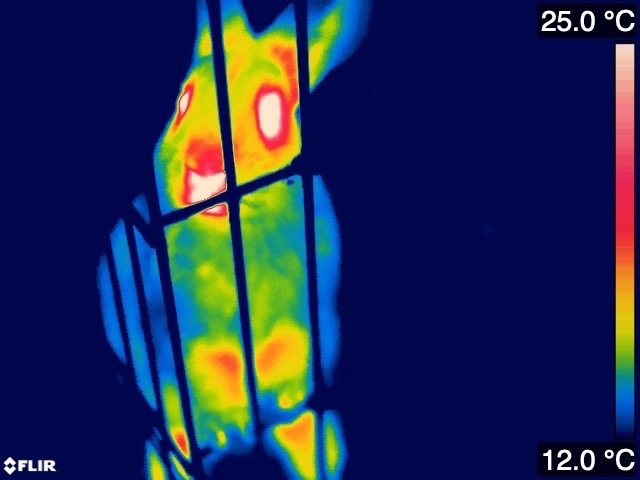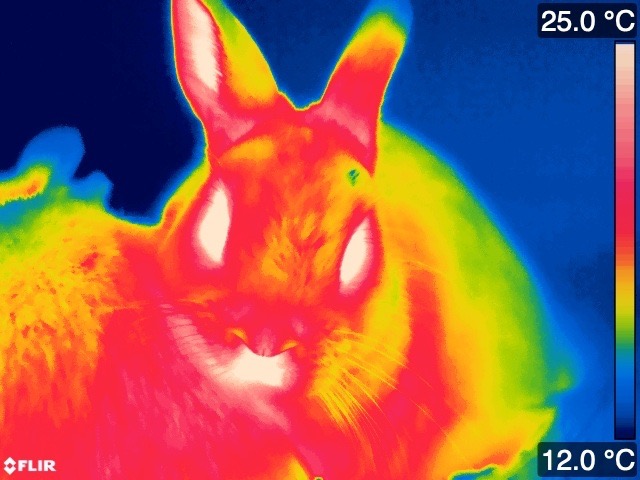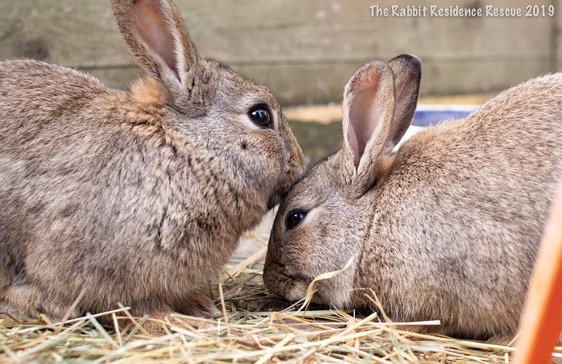No social distancing for rabbits: Why two bunnies are better than one
A study released today (8 April 2020) by the Royal Veterinary College (RVC) has found that, despite recent surveys suggesting that about half of pet rabbits are housed singly, housing rabbits together actually reduces stress related behaviour and helps them keep warm in winter.
The study, which sought to compare the welfare of single versus paired rabbits, was conducted during wintertime at a rabbit-only rescue centre, and included 45 rabbits, comprising of 15 housed singly and 15 pairs. Like most pet rabbits, they were housed either outdoors or in unheated outbuildings. Singletons were mostly in smaller enclosures than the pairs, and were awaiting pairing with a suitable partner.

In the wild, rabbits are social, but they are also territorial. Therefore, researcher Dr Charlotte Burn of the RVC, predicted singletons would show more stress-related behaviour, and reduced body temperature (being unable to huddle with another individual when cold), but that pairs may be aggressive towards each other.
The results from the study indicate that social housing prevents rabbits biting at the bars of their housing, helps them keep warm, and may help buffer stress. Behavioural observations revealed bar-biting in eight of the fifteen single rabbits compared with none of the thirty paired rabbits – bar-biting has previously been linked with frustration and attempts to escape.
Pairs interacted socially almost one third of the time, such as huddling together, grooming or nuzzling each other. Interestingly, aggression between pairs was never observed during the study. Most of the pairs comprised a neutered female and neutered male, which may be the most harmonious partnership for pet rabbits.

The study also found that body temperature was significantly lower in singletons than pairs, with at least 0.5°C mean difference. On colder days, rabbits adopted compact postures more often, and relaxed postures less frequently, suggesting that they were actively attempting to keep warm. After handling, pairs returned to normal behaviour in the home-pen significantly faster than singletons did. Enclosure size showed no significant effects in this study, but previous research has indicated that a hutch is not enough for rabbits.
Dr Charlotte Burn, Associate Professor in Animal Welfare and Behaviour Science at the RVC, said: “It was really sad to discover that lone rabbits were so much colder than the paired ones, and that more than half of them were seen biting at the bars of their enclosures.
“It’s crucial that we take rabbits’ needs for a companion seriously. There is a culture of getting ‘a rabbit’ and this needs to change, meaning that pet shops, vets and animal welfare charities should advise owners on housing rabbits with a compatible partner. Part of the enjoyment of having rabbits is surely to see them playing and resting together, especially when we give them suitably large housing.”
Lea Facey, Manager of The Rabbit Residence Rescue Charity, said: “It’s so important for the advancement of rabbit welfare that these issues are highlighted.”
The compatibility of individual rabbits is an important factor to consider, and it can be difficult to pair rabbits without them becoming stressed or aggressive, or having unwanted litters, so she continued, “We offer a bonding service if you have a single rabbit who is looking for a friend.”
The research was conducted as a dissertation project in part fulfilment of a BSc in Bioveterinary Sciences at RVC.

Research Reference
“Do rabbits need each other? Effects of single versus paired housing on rabbit body temperature and behaviour in a UK shelter” is published in Animal Welfare, the scientific journal of the Universities Federation for Animal Welfare (UFAW, Registered in England Charity No. 207996). Full paper available at: doi.org/10.7120/09627286.29.2.209
Notes to Editors
For more information please contact:
- Jasmin De Vivo (Jasmin.DeVivo@plmr.co.uk)
- Press Line: 0800 368 9520
About the RVC
- The Royal Veterinary College (RVC) is the UK's largest and longest established independent veterinary school and is a Member Institution of the University of London. It was the first in the world to hold full accreditation from AVMA, EAEVE, RCVS and AVBC.
- The RVC is the top veterinary school in the UK and Europe, and ranked as the world’s second highest veterinary school in the QS World University Rankings by subject, 2020.
- The RVC offers undergraduate and postgraduate programmes in veterinary medicine, veterinary nursing and biological sciences.
- In 2017, the RVC received a Gold award from the Teaching Excellence Framework (TEF) – the highest rating a university can receive.
- A research led institution with 79% of its research rated as internationally excellent or world class in the Research Excellence Framework 2014.
- The RVC provides animal owners and the veterinary profession with access to expert veterinary care and advice through its teaching hospitals and first opinion practices in London and Hertfordshire.
